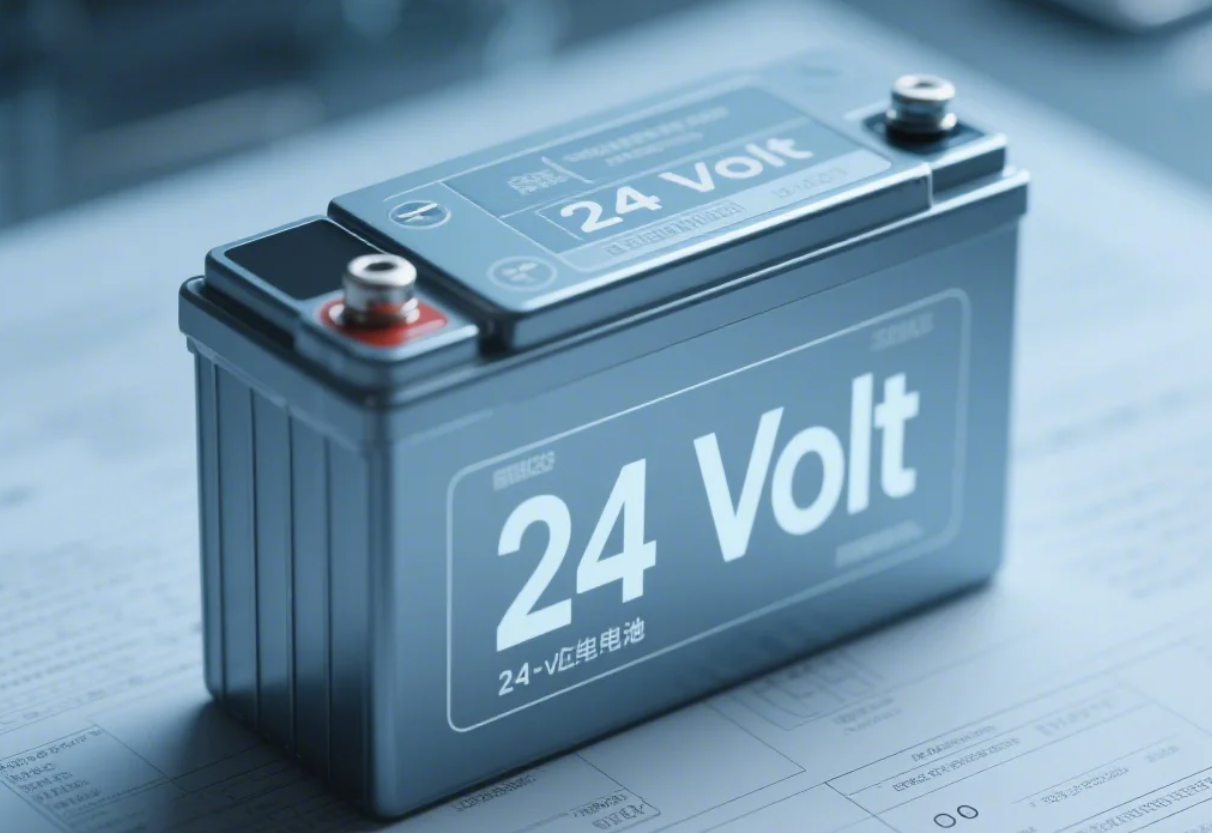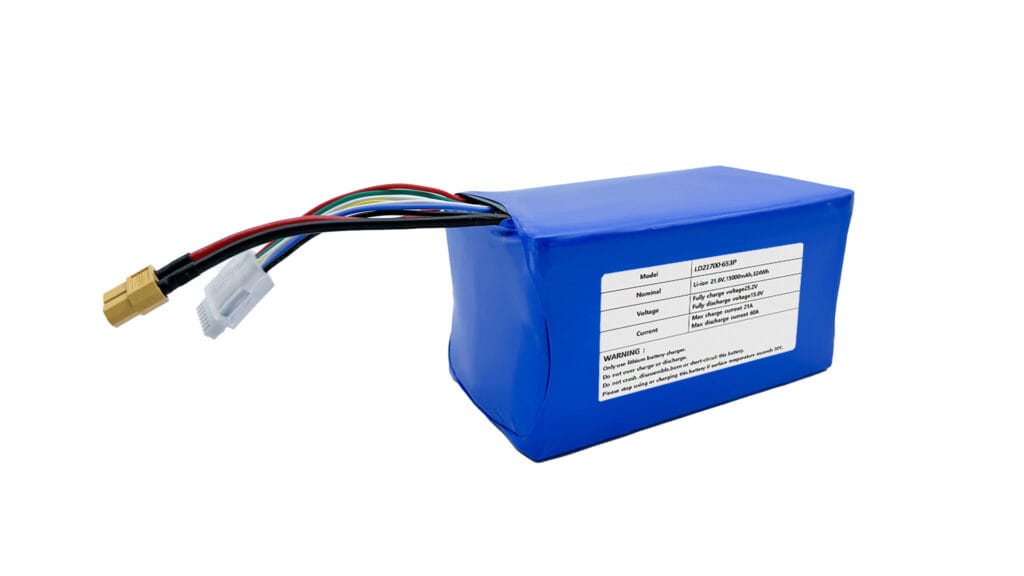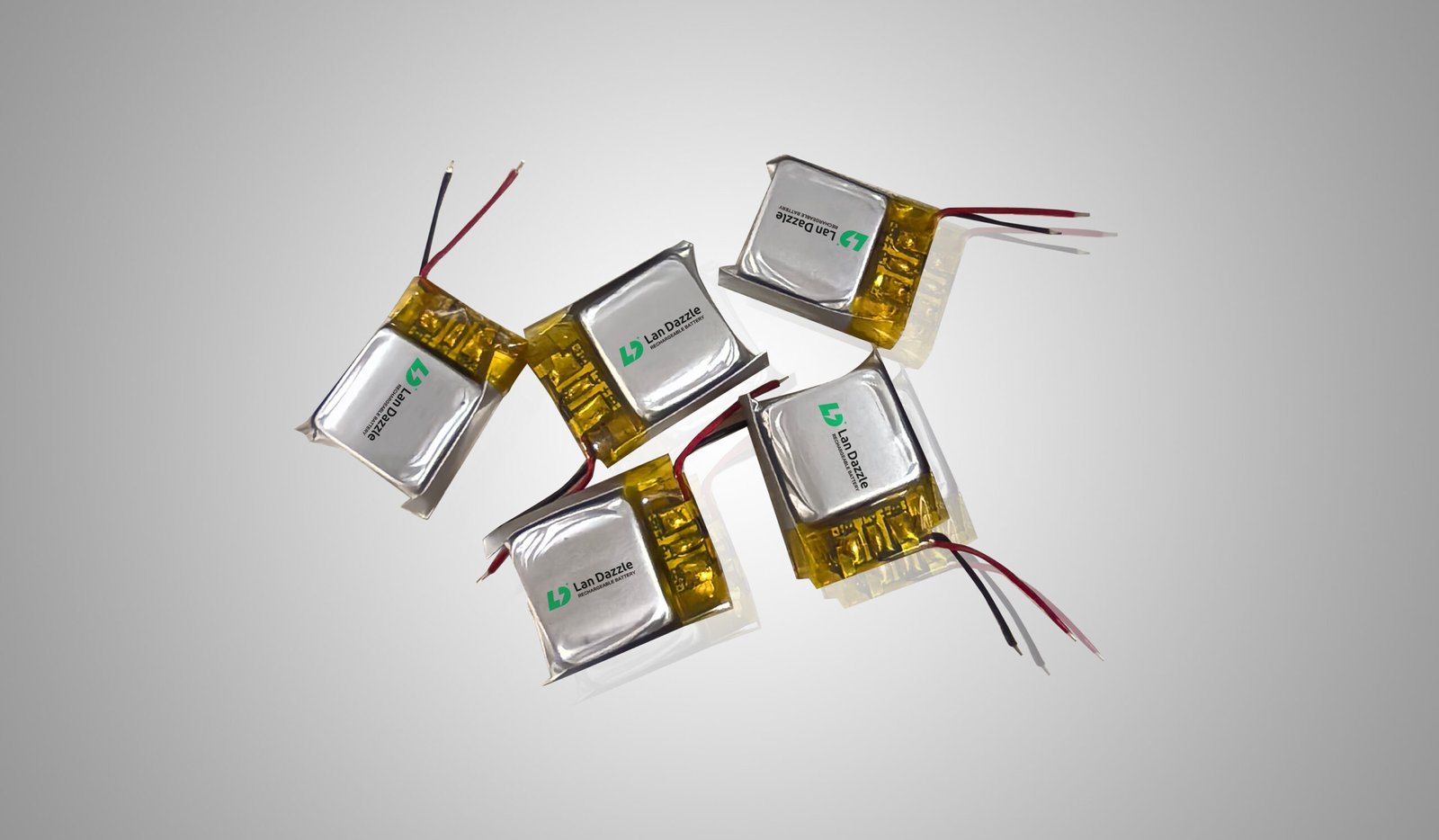W swej istocie Akumulator litowy 24 V to ładowalne źródło zasilania wykorzystujące jony litu do przechowywania i uwalniania energii. Oznaczenie "24 V" odnosi się do jego napięcia znamionowego, które określa rodzaj urządzeń, jakie może zasilać. Magia technologii litowo-jonowej polega na jej doskonałej gęstości energii, co oznacza, że może ona przechowywać więcej energii w stosunku do swojego rozmiaru i wagi w porównaniu do starszych technologii, takich jak akumulatory kwasowo-ołowiowe. Sprawia to, że są one idealne do zastosowań przenośnych, w których waga i przestrzeń mają kluczowe znaczenie. W tym artykule udzielimy odpowiedzi na pytanie, jak długo działa 24-woltowa bateria litowa.
Jak długo działa bateria litowa 24 V?
Kiedy mówimy o tym, jak długo "działa" 24-woltowa bateria litowa, często odnosimy się do dwóch kluczowych wskaźników: cykl życia i życie kalendarza.
Cykl życia odnosi się do liczby pełnych cykli ładowania i rozładowania, które akumulator może wytrzymać, zanim jego pojemność spadnie do określonego procentu pierwotnej wartości znamionowej (zazwyczaj 70-80%). Na przykład, bateria o żywotności 3000 cykli może zostać w pełni naładowana i rozładowana 3000 razy, zanim jej pojemność użytkowa znacząco spadnie. Wysokiej jakości baterie litowe 24 V często osiągają żywotność od 2000 do ponad 5000 cykli, w zależności od sposobu użytkowania i pielęgnacji.
Życie kalendarzaZ drugiej strony, odnosi się do starzenia się baterii w czasie, niezależnie od tego, jak często jest używana. Nawet jeśli bateria nie jest używana, jej wewnętrzne komponenty ulegają powolnej degradacji. Na żywotność kalendarza mają wpływ takie czynniki, jak temperatura przechowywania i początkowa jakość baterii. Typowa żywotność kalendarza dla Dobrze utrzymana 24-woltowa bateria litowa może działać od 5 do 10 lat, a nawet dłużej. Ważne jest, aby pamiętać, że w zastosowaniach o wysokiej intensywności użytkowania żywotność cyklu może zostać osiągnięta, zanim żywotność kalendarza stanie się czynnikiem ograniczającym.
Kluczowe czynniki, które znacząco wpływają na żywotność baterii litowej 24 V
Żywotność baterii litowej 24 V nie jest z góry określona. Kilka kluczowych czynników odgrywa znaczącą rolę w tym, jak długo będzie ona zasilać urządzenia:
Głębokość zrzutu (DoD): Odnosi się to do procentu pojemności akumulatora, który jest rozładowywany przed ponownym naładowaniem. Konsekwentne rozładowywanie akumulatora do bardzo niskiego poziomu (głębokie rozładowanie) znacznie obciąża jego wewnętrzną chemię i drastycznie skraca jego żywotność.
- Dane: Rozładowanie baterii litowej tylko do 50% DoD może często podwoić lub nawet potroić jej żywotność w porównaniu do rozładowania do 100% DoD. Na przykład, bateria oceniana na 3000 cykli przy 80% DoD może osiągnąć ponad 5000 cykli, jeśli będzie konsekwentnie rozładowywana tylko do 50%.
- Przykład: Rowerzysta elektryczny, który często całkowicie rozładowuje akumulator, prawdopodobnie będzie miał krótszą żywotność w porównaniu z osobą, która ładuje akumulator po każdej krótszej jeździe, wykorzystując tylko część jego pojemności.
Nawyki związane z ładowaniem: Sposób ładowania 24-woltowej baterii litowej ma ogromny wpływ na jej żywotność. Przeładowanie, czyli kontynuowanie ładowania akumulatora nawet po jego całkowitym naładowaniu, może prowadzić do przegrzania i nieodwracalnych uszkodzeń. Używanie niewłaściwej ładowarki, która zapewnia wyższe napięcie niż zalecane, również może być szkodliwe. Kluczowym elementem w zarządzaniu ładowaniem jest System zarządzania akumulatorem (BMS)który jest zwykle zintegrowany z zestawami baterii litowych. System BMS chroni baterię przed przeładowaniem, nadmiernym rozładowaniem i zbyt wysokimi temperaturami.
- Dane: Przekroczenie zalecanego napięcia ładowania nawet o niewielki margines może znacznie skrócić żywotność akumulatora i potencjalnie stanowić zagrożenie dla bezpieczeństwa.
- Przykład: Używanie ładowarki 28 V do akumulatora 24 V może z czasem spowodować jego uszkodzenie. Należy zawsze używać ładowarki zaprojektowanej specjalnie dla danego akumulatora.
Temperatura pracy: Baterie litowe są wrażliwe na ekstremalne temperatury. Zarówno wysokie, jak i niskie temperatury mogą negatywnie wpływać na ich wydajność i skracać ich żywotność. Wysokie temperatury przyspieszają reakcje chemiczne wewnątrz baterii, prowadząc do jej szybszej degradacji. Niskie temperatury mogą tymczasowo zmniejszyć pojemność, a w skrajnych przypadkach spowodować trwałe uszkodzenie podczas ładowania.
- Dane: Idealny zakres temperatur pracy dla większości akumulatorów litowo-jonowych wynosi 20-25°C (68-77°F). Praca w znacznie wyższych temperaturach (np. powyżej 45°C lub 113°F) może skrócić żywotność nawet o 50%.
- Przykład: Pozostawienie akumulatora roweru elektrycznego w bezpośrednim świetle słonecznym w gorący letni dzień lub próba naładowania zamarzniętego akumulatora może negatywnie wpłynąć na jego żywotność.
Współczynnik rozładowania (C-Rate): Współczynnik C wskazuje, jak szybko akumulator jest rozładowywany w stosunku do jego maksymalnej pojemności. Współczynnik rozładowania 1C oznacza, że bateria rozładowuje się w tempie, które spowodowałoby jej całkowite wyczerpanie w ciągu jednej godziny. Ciągłe pobieranie energii przy bardzo wysokim współczynniku C generuje ciepło i obciąża baterię, co może skrócić jej żywotność.
- Dane: Ciągłe rozładowywanie akumulatora z wysoką prędkością C (np. 2C lub wyższą) może znacznie skrócić jego żywotność w porównaniu do rozładowywania z niższą prędkością (np. 0,5C).
- Przykład: Akumulator elektronarzędzia używanego do ciągłych, ciężkich zastosowań będzie prawdopodobnie bardziej obciążony niż akumulator używany do sporadycznych, lekkich zadań.
Warunki przechowywania: Sposób przechowywania 24-woltowej baterii litowej, gdy nie jest ona używana, ma kluczowe znaczenie dla utrzymania jej w dobrym stanie. Przechowywanie baterii w ekstremalnych temperaturach lub w stanie pełnego naładowania lub całkowitego rozładowania może przyspieszyć jej degradację.
- Dane: Zalecany stan naładowania baterii litowych wynosi zazwyczaj około 50-70%. Przechowywanie ich w chłodnym, suchym środowisku jest również niezbędne do zminimalizowania samorozładowania i degradacji.
- Przykład: Przechowywanie w pełni naładowanego akumulatora kampera w gorącym magazynie przez zimę może znacznie skrócić jego żywotność w porównaniu do przechowywania go w stanie naładowania około 60% w chłodnym miejscu.
Oczekiwania dotyczące żywotności w różnych zastosowaniach akumulatorów 24 V
Rzeczywista żywotność 24-woltowej baterii litowej może się różnić w zależności od konkretnego zastosowania i sposobu jej użytkowania:
- Rowery elektryczne i skutery: W przypadku użytkowników rekreacyjnych, którzy ładują akumulator po większości przejażdżek i unikają głębokich rozładowań, 24-woltowy akumulator do roweru elektrycznego może wytrzymać 3-5 lat lub 500-1000 cykli. Osoby codziennie dojeżdżające do pracy, które intensywnie korzystają ze swoich rowerów elektrycznych, mogą mieć żywotność 2-4 lat lub 800-1500 cykli, w zależności od warunków jazdy i konserwacji.
- Morskie silniki trollingowe: W środowisku słodkowodnym, przy odpowiedniej pielęgnacji i umiarkowanym użytkowaniu, 24-woltowa bateria litowa do silnika trolingowego może wytrzymać 5-7 lat lub 1000-2000 cykli. Jednak narażenie na działanie słonej wody i ciągłe korzystanie z dużej mocy może skrócić tę żywotność.
- Systemy dla kamperów i pojazdów kempingowych: Po zintegrowaniu z dobrze zaprojektowanymi systemami solarnymi lub zasilanymi z lądu, z odpowiednimi kontrolerami ładowania i przemyślanym użytkowaniem (unikając głębokich rozładowań), 24-woltowe baterie litowe w kamperach mogą wytrzymać 7-10 lat lub nawet dłużej, potencjalnie przekraczając 3000 cykli.
- Magazynowanie energii słonecznej: W domowych lub małych instalacjach solarnych, 24-woltowe baterie litowe przeznaczone do magazynowania energii, gdy są zarządzane przez dobrej jakości kontroler ładowania i nie są stale głęboko rozładowywane, często mogą osiągnąć żywotność ponad 10 lat i tysiące cykli.
- Elektronarzędzia: W przypadku profesjonalnych elektronarzędzi używanych codziennie i często ładowanych, 24-woltowa bateria litowa może wytrzymać 3-5 lat lub 500-1000 cykli, w zależności od intensywności użytkowania i nawyków ładowania.
Wskazówki dotyczące maksymalizacji żywotności baterii litowej 24 V
Wydłużenie żywotności 24-woltowej baterii litowej jest w dużej mierze pod kontrolą użytkownika. Stosując te najlepsze praktyki, można znacznie wydłużyć jej żywotność:
- Proszę unikać głębokich wyładowań: Należy spróbować naładować baterię, zanim jej pojemność spadnie poniżej 20-30%. Częściowe rozładowania są generalnie lepsze dla żywotności baterii litowej niż konsekwentne głębokie rozładowania.
- Proszę używać właściwej ładowarki: Należy zawsze używać ładowarki przeznaczonej specjalnie do akumulatorów litowych 24 V. Korzystanie z niekompatybilnej ładowarki może prowadzić do przeładowania lub nieprawidłowego napięcia ładowania.
- Praca w zalecanym zakresie temperatur: Należy unikać wystawiania akumulatora na działanie wysokich lub niskich temperatur podczas pracy i ładowania.
- Minimalizacja wysokich prędkości rozładowania: Jeśli to możliwe, unikaj ciągłego pobierania maksymalnej mocy z baterii przez dłuższy czas.
- Baterie należy przechowywać we właściwy sposób: Gdy bateria nie jest używana przez dłuższy czas, należy przechowywać ją w stanie naładowania około 50-70% w chłodnym, suchym miejscu. Należy unikać przechowywania w pełni naładowanych lub całkowicie rozładowanych akumulatorów.
- Proszę postępować zgodnie z wytycznymi producenta: Zawsze należy zapoznać się z zaleceniami producenta, aby uzyskać szczegółowe instrukcje dotyczące pielęgnacji i konserwacji danego modelu akumulatora.
- Wykorzystanie systemu zarządzania akumulatorem (BMS): System BMS służy do ochrony akumulatora. Nie próbuj go omijać ani ignorować jego ostrzeżeń.
Wnioski
Żywotność 24-woltowej baterii litowej to złożony temat, na który wpływa złożona interakcja wzorców użytkowania, warunków środowiskowych i starannej konserwacji. Chociaż dokładna odpowiedź na pytanie "jak długo to potrwa?" jest nieuchwytna, zrozumienie zasad żywotności cyklu, żywotności kalendarza i kluczowych czynników, które mają na nie wpływ, umożliwia podejmowanie świadomych decyzji i stosowanie praktyk, które znacznie wydłużają moc baterii.
Unikając głębokich rozładowań, używając odpowiedniej ładowarki, efektywnie zarządzając temperaturą i mądrze przechowując baterię, można uwolnić prawdziwy potencjał 24-woltowej baterii litowej i cieszyć się niezawodną mocą przez wiele lat. Wraz z dalszym rozwojem technologii baterii litowych, możemy spodziewać się jeszcze większej trwałości i wydajności w zasilaniu, które napędza nasz coraz bardziej zelektryfikowany świat.
FAQ
-
Jak długo wytrzyma 24-woltowa bateria litowa na jednym ładowaniu? Czas pracy 24-woltowej baterii litowej na jednym ładowaniu w dużym stopniu zależy od zastosowania i obciążenia, które zasila, a także od pojemności baterii, zwykle mierzonej w amperogodzinach (Ah). Na przykład akumulator 24 V 10 Ah zasilający rower elektryczny może zapewnić zasięg 15-30 mil w zależności od terenu, wagi rowerzysty i poziomu wspomagania.
-
Jaka jest typowa żywotność 24-woltowej baterii litowej? Typowa żywotność wysokiej jakości 24-woltowej baterii litowej wynosi od 2000 do 5000 lub więcej cykli ładowania i rozładowania.
-
Ile lat może wytrzymać bateria litowa 24 V? Żywotność kalendarzowa 24-woltowej baterii litowej, czyli jej żywotność oparta na starzeniu się w czasie niezależnie od użytkowania, zazwyczaj wynosi od 5 do 10 lat lub nawet dłużej przy odpowiedniej pielęgnacji. Czynniki takie jak temperatura przechowywania odgrywają znaczącą rolę w starzeniu się kalendarza. Przechowywanie baterii w chłodnym i suchym miejscu może wydłużyć jej żywotność. W zastosowaniach, w których bateria jest często używana, żywotność cyklu może zostać osiągnięta, zanim żywotność kalendarza stanie się czynnikiem ograniczającym. Dlatego zarówno wzorce użytkowania, jak i nawyki przechowywania wpływają na ogólną żywotność w latach.
-
Czy temperatura wpływa na żywotność 24-woltowej baterii litowej? Tak, temperatura ma znaczący wpływ na żywotność baterii litowej 24 V. Ekstremalne temperatury, zarówno wysokie, jak i niskie, mogą negatywnie wpływać na wydajność baterii i przyspieszać jej degradację. Wysokie temperatury mogą przyspieszyć wewnętrzne reakcje chemiczne, prowadząc do szybszej utraty pojemności i krótszej żywotności. Niskie temperatury mogą tymczasowo zmniejszyć pojemność akumulatora i spowodować trwałe uszkodzenie, jeśli akumulator jest ładowany w stanie zamrożenia. Idealny zakres temperatur roboczych dla większości akumulatorów litowo-jonowych wynosi 20-25°C (68-77°F).
-
Jak sprawić, by moja 24-woltowa bateria litowa działała dłużej? Aby zmaksymalizować żywotność 24-woltowej baterii litowej, należy stosować następujące kluczowe praktyki: unikać głębokich rozładowań poprzez częstsze ładowanie, zawsze używać odpowiedniej ładowarki, obsługiwać i przechowywać baterię w zalecanym zakresie temperatur, minimalizować wysokie wskaźniki rozładowania, gdy jest to możliwe, i przechowywać baterię w stanie naładowania około 50-70% w chłodnym, suchym miejscu, gdy nie jest używana przez dłuższy czas. Kluczowe znaczenie ma również przestrzeganie wytycznych producenta dotyczących danego modelu akumulatora.
-
Czy 24-woltowe akumulatory litowe są lepsze od akumulatorów kwasowo-ołowiowych pod względem żywotności? Ogólnie rzecz biorąc, 24-woltowe akumulatory litowe oferują znacznie dłuższą żywotność w porównaniu do tradycyjnych akumulatorów kwasowo-ołowiowych. Chociaż początkowy koszt baterii litowych jest zazwyczaj wyższy, ich zdolność do wytrzymania znacznie większej liczby cykli ładowania i rozładowania często czyni je bardziej opłacalnymi w dłuższej perspektywie, szczególnie w przypadku zastosowań wymagających częstego użytkowania.





